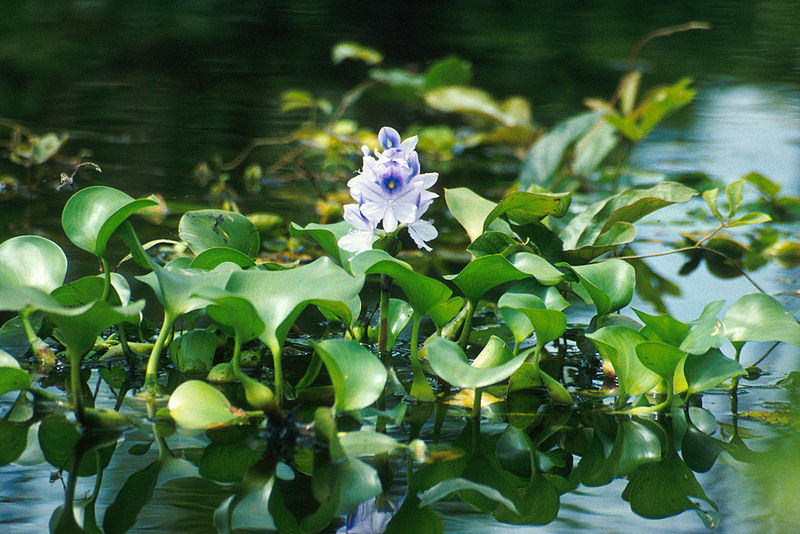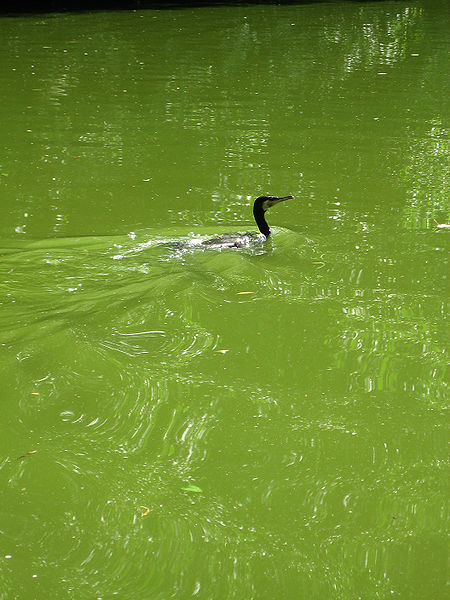Hello, Frank Indiviglio here. I must confess that I like algae, perhaps because many of the creatures that I favor – shrimp, tadpoles, snails, loaches and others, do best in algae-rich tanks. I’ve even encouraged algae to grow on the backs of aquatic snakes and turtles in zoo exhibits, much to the chagrin of the higher-ups!
But, of course, algae certainly can get in the way of enjoying one’s pond or aquarium, and may endanger the health of the animals living therein as well.
Algae Diversity
Algae, which are not true plants, exist in a bewildering number of species. For our purposes, we can roughly classify the commonly-encountered varieties as follows:
Green algae (hair, beard algae) thrive in well-lit situations.
Brown algae do well in low light.
Blue-green algae (actually a type of Cyanobacteria) and red algae live mainly in marine environments.
Controlling Algae
Nitrates and phosphates are the primary nutrients utilized by the most types of algae…limiting their concentration is the key to effective and safe algae control.
Algaecides and other “quick fixes”, while effective in the short term, do not address the root of the problem. I always recommend that aquarists take the time to identify the reasons that algae has become established. I have found this to be the most effective approach to algae control, be it in a betta bowl or a 77,000 gallon zoo exhibit. And, because we learn much along the way and often utilize a number of fascinating animals and plants, the process is also very rewarding.
I’ll first discuss control methods that can generally be described as “natural” and will then mention a few more intensive alternatives.
Bacteria
The most effective algae enemy we might employ comes, surprisingly, in the form of another one-celled “non-plant/non-animal” – bacteria. Many species consume the same nutrients as do algae, and can out-breed and out-compete even the hardiest types.
A number of species of beneficial aerobic bacteria (those requiring oxygen, which are also vital to water quality) will colonize gravel, filter media and other surfaces bathed in aerated water. They will build up incredibly dense populations over an under-gravel filter, rendering it very difficult for algae to get a foothold.
Nutrafin Cycle, which contains living bacteria, is especially effective in introducing these organisms to aquariums. A number of other supplements, effective in fresh water and marine aquariums, are also available.
True Plants
 Aquatic plants are very effective in capturing the nutrients needed by algae and limiting their growth. However, many do not reproduce vigorously, so plantings should be as dense as possible. In some situations, carbon dioxide supplementation and the use of plant food and iron might be useful.
Aquatic plants are very effective in capturing the nutrients needed by algae and limiting their growth. However, many do not reproduce vigorously, so plantings should be as dense as possible. In some situations, carbon dioxide supplementation and the use of plant food and iron might be useful.
Floating and emergent plants such as cattails and water hyacinth, lettuce, and lilies combat algae on two fronts – consuming nutrients and limiting light availability.
If you are not ready to tackle aquatic plant gardening, you might consider using certain hardy terrestrial plants that thrive in water. As long as their leaves can break the surface, peace lilies, pothos and aluminum plants will fulfill much the same role as true aquatic plants, and their root systems make for wonderful underwater effects.
Next time I’ll discuss how fishes, invertebrates and water additives can be used to combat algae. Until then, please write in with your questions and comments. Thanks, Frank Indiviglio.
Further Reading
To learn more about Cyanobacteria (“blue-green algae”), please see Aquarium Slime.
To read about adding beneficial bacteria to aquariums, please see my article Nutrafin Cycle.
 What fun is a pond with pea-green water or masses of stringy gunk growing from every submerged surface? You work so hard to keep your pond clean, clear and looking good, but even with the best efforts, algae can appear in a flash, a stringy, slimy eyesore, mucking up the view. Most algae outbreaks can be quelled by addressing water chemistry (nutrient) issues or finding a way to control the amount of light that penetrates the water’s surface.
What fun is a pond with pea-green water or masses of stringy gunk growing from every submerged surface? You work so hard to keep your pond clean, clear and looking good, but even with the best efforts, algae can appear in a flash, a stringy, slimy eyesore, mucking up the view. Most algae outbreaks can be quelled by addressing water chemistry (nutrient) issues or finding a way to control the amount of light that penetrates the water’s surface. That Fish Blog – Aquarium Advice and Information
That Fish Blog – Aquarium Advice and Information

 Aquatic plants are very effective in capturing the nutrients needed by algae and limiting their growth. However, many do not reproduce vigorously, so plantings should be as dense as possible. In some situations,
Aquatic plants are very effective in capturing the nutrients needed by algae and limiting their growth. However, many do not reproduce vigorously, so plantings should be as dense as possible. In some situations,